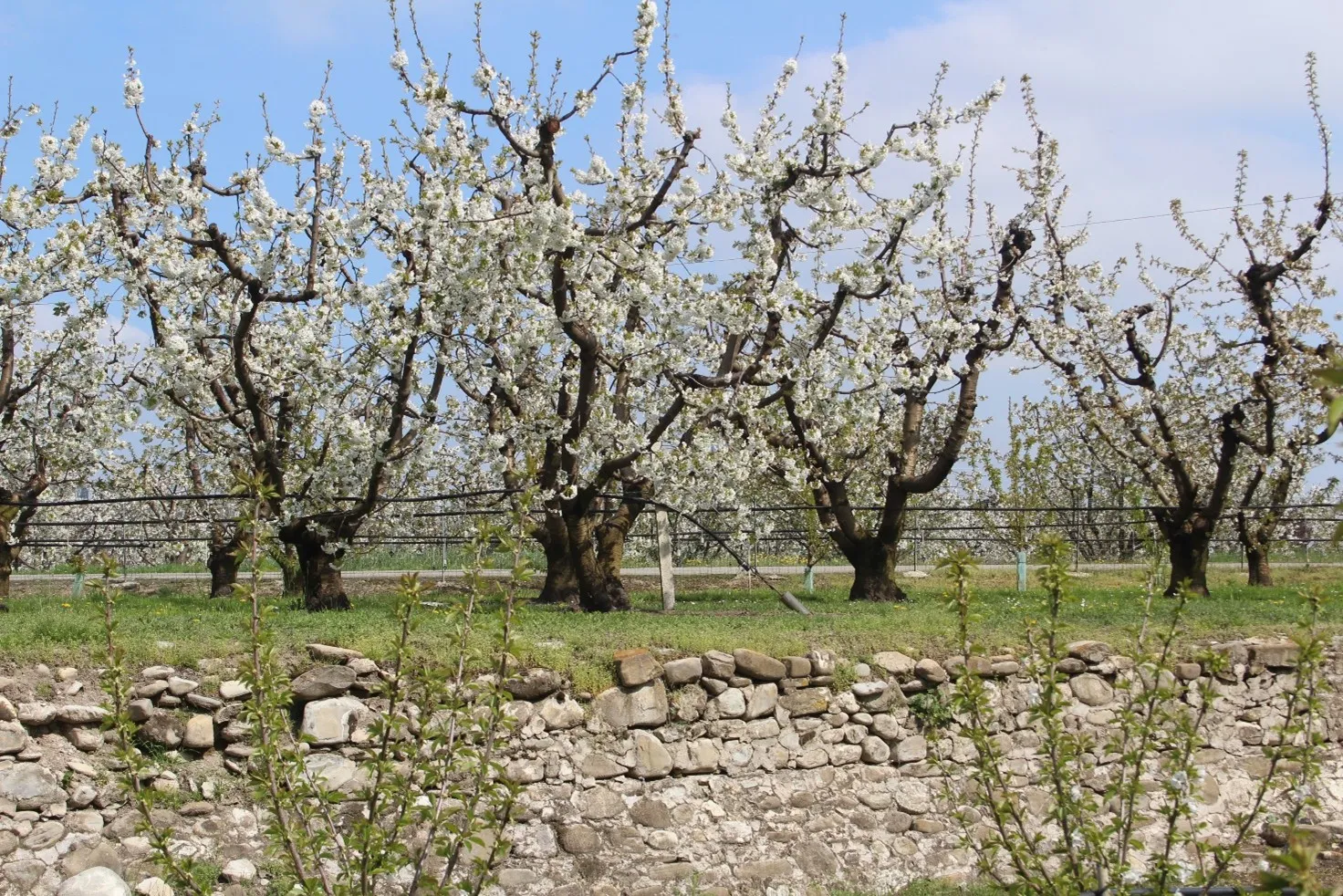Fruit grower Thomas Hungerbühler, from the Peierslehn district of Egnach, is a Swiss pioneer with his cherry orchard under a photovoltaic structure. The system has now been completed and the cherry trees have been planted.
The headquarters of Hungerbühler Obstbau is located in a beautiful area between Egnach and Neukirch. The family business has expanded to 43 hectares. The farm, dedicated exclusively to fruit growing, includes the production, storage, and marketing of apples, pears, and cherries.
In the refrigeration and storage facility, built in 2022, up to 2,300 tons of fruit can be stored.
Energy and family independence
The roof of the facility is equipped with 3,200 square meters of solar panels. The goal of Thomas Hungerbühler, the farm manager, has always been to ensure maximum independence – both commercially and in terms of energy.
The major innovations of recent years have been discussed and decided within the family, with the awareness that the business will continue to be passed down. His wife Ursula coordinates the staff: from four to five permanent employees and, during the season, up to 45 seasonal pickers.
Their son Michael, 23, is responsible for production and harvesting, while Thomas takes care of storage and logistics.
Experiences from Belgium and the Netherlands
Florian Sandrini, head of crop consulting at BBZ Arenenberg, has supervised an experimental farm in Güttingen and is an expert in photovoltaic systems on crops of berries and stone fruit, both in Switzerland and abroad.
In particular, such systems have long existed in the Netherlands and Belgium. Christian Wolf, whose company built Hungerbühler’s agro-photovoltaic installation, recommends – given the uncertain electricity market – to produce mainly for self-consumption.
The presence of a transformer station nearby is also necessary. Construction work did not always proceed as planned due to the rainy weather conditions of the past two years.
Benefits of photovoltaics for cherries
Last autumn, in the meadow behind the warehouse, the steel pillars of the structure were anchored into the ground and subsequently 500 square meters were covered with solar panels.
On June 13 of this year, 1,500 cherry trees, previously stored in cold rooms, were planted. These include both established and new varieties.
Hungerbühler aims to assess how the different varieties perform under the photovoltaic system compared to open-field cultivation. He also wants to determine whether it is possible to reduce the risk of frost during flowering and extend the harvest period, thanks to the slight increase in temperature under the panels.
The photovoltaic system should also reduce the need for traditional protections such as hail nets. Depending on weather conditions, the structure acts as a roof against both sun and rain.
Source: thurgauerzeitung.ch
Image source: Trudi Krieg, TZ
Trudi Krieg
TZ
Cherry Times - All rights reserved












